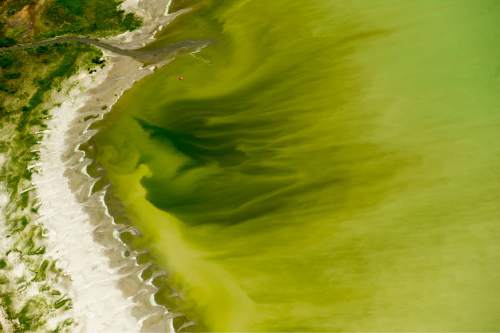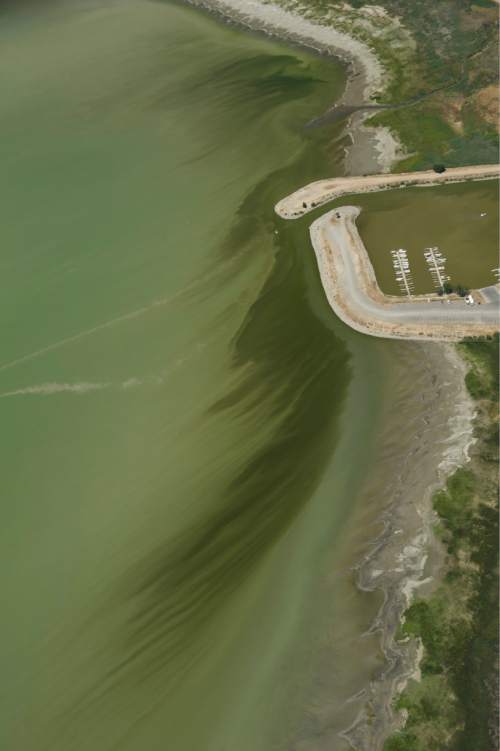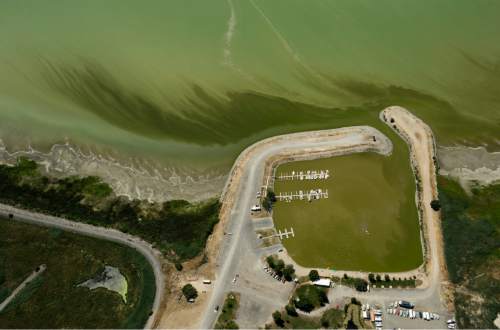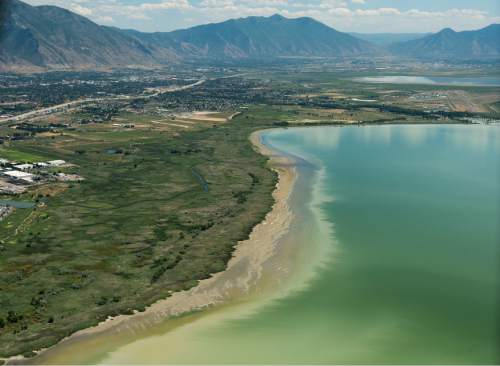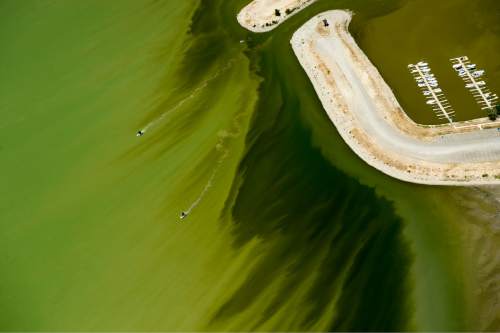This is an archived article that was published on sltrib.com in 2016, and information in the article may be outdated. It is provided only for personal research purposes and may not be reprinted.
The Utah County Health Department has decided to end its closure of the Jordan River in Utah County, but Utah Lake remains closed and health advisories remain in effect, based on the latest data from the Utah Department of Environmental Quality (DEQ).
The most recent set of tests found that concentrations of cyanobacteria in Utah Lake have decreased in most locations to nonthreatening levels, with the exceptions of Lincoln Harbor and the American Fork harbor, where counts continue to exceed the safety threshold of 100,000 cells per milliliter of water, according to the DEQ. Utah Lake is expected to remain closed until more samples can be collected on Tuesday.
Preliminary lab results found most samples collected from both Utah Lake and the Jordan River contained low or undetectable levels of all measurable liver and nerve toxins produced by cyanobacteria. The sole exception, according to the DEQ, was a single sample collected at Lincoln Harbor on July 15, which contained concentrations of microcystin nine times higher than the level considered safe for recreational uses, said Erica Gaddis, assistant director of the Utah Division of Water Quality. She said that sample was taken directly from an algal mat.
In a news release, Gaddis said the test results thus far look encouraging.
Microcystin is a liver toxin that can also irritate the skin, eyes and throat. Symptoms of exposure to the toxin are similar to those associated with exposure to the cyanobacteria themselves and can result in gastrointestinal distress and skin irritation, according to the Environmental Protection Agency.
Based on the toxin results, the DEQ recommends livestock owners return to normal watering practices with water coming from the Jordan River or from Salt Lake County canals, but not for water sourced directly from Utah Lake.
The Utah Department of Agriculture and Food has lifted its advisory against using water from Utah Lake for food production and livestock.
Ainslynn Tolman-Hill said recent test results prompted the county health department to lift its closure of the Jordan River, where test results indicate the concentration of cyanobacteria is also declining. However, she said, the department continues to encourage people to avoid the river, because the algae is still present in potentially harmful concentrations. "Danger" signs posted at points of public access to the river will be downgraded to the "warning" level, she said.
"There's still some risk for sure," she said, "but we are able to lower that to a warning instead of a closure."
Warnings remain posted at points of access to the Jordan River in Salt Lake County as well.
Meanwhile, the Welby Jacob Water Users Company has claimed responsibility for a mysterious green foam that raised alarm in Bluffdale on Thursday night.
The fluffy green matter oozing from a Bluffdale irrigation box was a cleaning agent the company applied yesterday to clear moss and weeds from its canals, said Darryl Lehmizt, president of the Welby Jacob Water Users Company. The agent is an approved aquacide and did not pose a threat to the public, he said. It was not related to the ongoing algal bloom.
The canal company uses this treatment annually to clean its canals. Lehmizt said he suspected people took notice of the foam this year because of the heightened awareness surrounding the algae.
Twitter: @EmaPen


